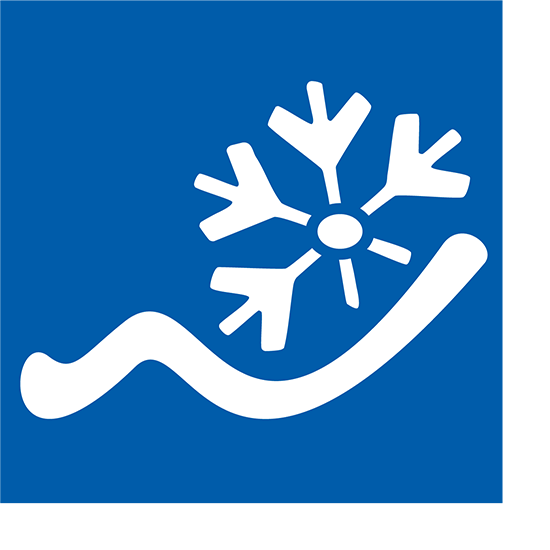
Water management
Use or "consumption"?
The water required for snowmaking in the Sauerland winter sports arena generally comes from streams. It is collected in summer and fall in specially constructed storage ponds. After the snow melts, almost all of the water is returned to the natural water cycle.
This is so-called "blue" water. This term refers to water that is used for irrigation, similar to the water used in agriculture to irrigate plants. In contrast, "grey" water refers to a use in which the water is impaired, for example by fertilizers, pesticides, household or industrial waste, can only be reused to a limited extent and usually has to be recycled. "Green" water stands for natural precipitation, also in the form of snow.

Snowmaking water is and remains clear, pure water
No additives are added to the water during snowmaking. Similar to natural snowfall, the water droplets freeze in the cold outside air. The water required for snowmaking remains clean at all times and does not need to be reprocessed. After the snow melts, it is returned to the natural water cycle unpolluted. If we consider technically produced snow as a "product", it is a natural recycling process without any further energy input.
Snow losses only occur through sublimation, i.e. the transition from solid snow crystals to water vapor. However, the water is not "lost" in this process either.

Comparison of water requirements
- Snow tourism uses comparatively little (532,000 m³) water for snowmaking and produces hardly any waste water.
- The production of beef from intensive farming requires 5,991 liters of water per kg. For beef from extensive grazing it is even 12,229 liters.
- One ski guest day requires 650 - 850 liters of water, resulting in a ticket turnover of € 30.45 per m³.
- 1 pint of beer requires 300 liters and generates only € 2.93 revenue per m³, but large amounts of waste water.
- ½ barbecue chicken requires 2,000 liters and generates € 2.60 revenue per m³.
Storage ponds in the Sauerland winter sports arena
Winterberg: 5 ponds with a total of 220,000 cubic meters
Willingen: 1 pond with 50,000 cubic meters
Neuastenberg: 1 pond with 10,000 cubic meters
Altastenberg: 1 pond with 26,000 cubic meters
Bödefeld-Hunau: 1 pond with 7,000 cubic meters
Züschen: 1 pond with 5,000 cubic meters
Olpe-Fahlenscheid with 5,000 cubic meters
Other smaller ponds with a total of around 10,000 cubic meters: 2 in Winterberg, 1 at the source of the Ruhr, 1 in Usseln, 1 in Schmallenberg
For comparison:
The Hennesee near Meschede has a capacity of 13.3 million cubic meters
8 reservoirs in the Sauerland with a total capacity of 463 million cubic meters
Initial snowmaking on all 83 slopes in the region that have a snowmaking system requires a volume of water equivalent to around 0.015 percent of all reservoirs in the Sauerland, or less than 0.6 percent of Lake Henne.
Only surface water is used, not groundwater. Only a small proportion of the water used for snowmaking is taken from the drinking water network. However, this use is the first to be prohibited in the event of a drinking water shortage, meaning that the drinking water supply for the population has no connection to the snowmaking systems in the ski resorts.
